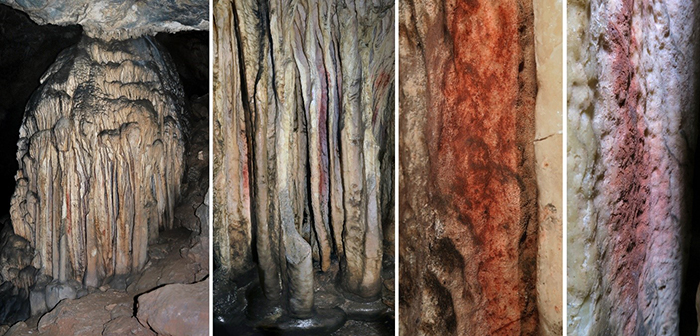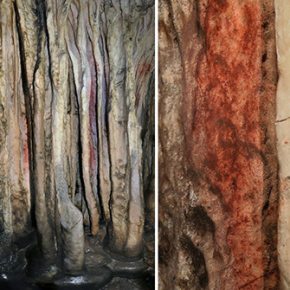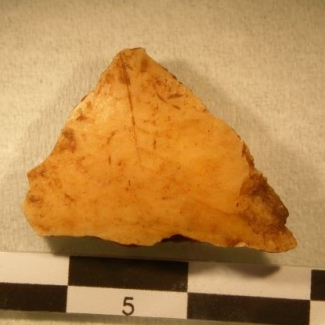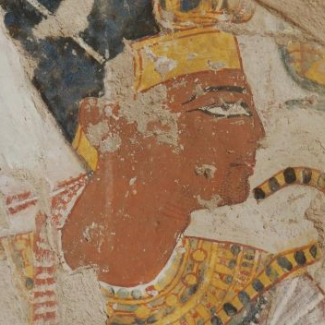
Neanderthals indeed painted Andalusia’s Cueva de Ardales
The origin and date of appearance of prehistoric cave art are the subjects of ongoing debate. Spain’s Cueva de Ardales is one point of discussion. There a flowstone formation is stained red in places. This colouring is apparently almost 65,000 years old1 but until now, a part of the scientific community attributed it to a natural coating of iron oxide deposited by flowing water. However, that hypothesis has just been rejected by the findings of an international team of scientists including a CNRS researcher2 . The team members analysed samples of red residues collected from the flowstone surface and compared them with iron oxide–rich deposits in the cave. They concluded that the ochre-based pigment was intentionally applied, i.e. painted—by Neanderthals, as modern humans had yet to make their appearance on the European continent—and that, importantly, it had probably been brought to the cave from an external source.
Furthermore, variations in pigment composition between samples were detected, corresponding to different dates of application, sometimes many thousands of years apart. Thus, it seems that many generations of Neanderthals visited this cave and coloured the draperies of the great flowstone formation with red ochre. This behaviour indicates a motivation to return to the cave and symbolically mark the site, and it bears witness to the transmission of a tradition down through the generations. The scientists’ findings have been published in PNAS on 2 August 2021.

© João Zilhão, ICREA
- 1In comparison, the oldest paintings of Chauvet Cave, near the Pont d’Arc, have been dated back roughly 37,000 years; and those of Lascaux, 21,000 years.
- 2The CNRS scientist is affiliated with the PACEA research unit (CNRS / University of Bordeaux / French Ministry of Culture). The LaScArBx archaeological science cluster, the Human Past research project, and the University of Bordeaux’s Talents programme funded this work.
The symbolic role of the underground world among Middle Palaeolithic Neanderthals. Africa Pitarch Martí, João Zilhão, Francesco d’Errico, Pedro Cantalejo-Duarte, Salvador Domínguez-Bella, Josep M. Fullola, Gerd C. Weniger et José Ramos-Muñoz. PNAS, le 2 août 2021. https://www.pnas.org/cgi/doi/10.1073/pnas.2021495118


